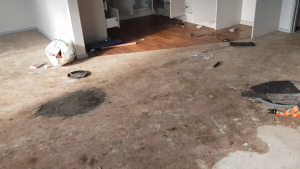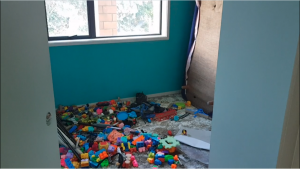Nearly 1 year ago, a politically led report into the risks presented by methamphetamine and how these should be managed was released by the Office of the Prime Minister’s Chief Science Advisor.
The report identified that:
- The lack of very specific documented evidence health effects, meant that raising acceptable levels for meth residues, to at least 10 times higher than any jurisdiction anywhere in the world considered appropriate, was an acceptable thing to do.
- The risk presented by meth was so low, there was no point in actively managing the risk. Evidence to support this assertion, came from analysis of samples in higher risk property. Less than 1 in 100 samples taken identified levels ESR would associated with manufacture. The fact this came from nearly 5% of the properties sampled, was not mentioned.
- If the risk was to be managed, then rather than use lab-based testing, which identified low levels and allowed an assessment of risk to be made, instant answer kits should be used. These kits trigger when levels recommended by the author are exceeded. With limits set to be enshrined in law, landlord’s who follow this advice only find out they are in breach of their obligations, when they are actually in breach. This makes them liable to tenants AND responsible for cleaning things up.
Release of the report was accompanied by a media storm. This saw legitimate, law abiding businesses vilified. At the same time, many of those who were directly responsible for the meth contamination, were treated as victims.
The report came from a trusted source. It was the report many disparate groups wanted. It was taken at face value and many people acted upon the advice it contained. The result?
Many people buying houses decided meth testing was no longer required from a due diligence perspective. People have bought houses with meth residues that even Gluckman would consider inappropriate.
Many of those who owned rentals, were persuaded that they no longer needed to spend money on managing the risk. Some of these have been encouraged to do so by people from within the property management industry. They have removed a positive check and balance on meth related behaviour. In so doing, they have lost the opportunity to hold tenants responsible for meth related damages.
They have reduced their operational costs, but at what cost as far as longer-term investment returns are concerned?
NZS8510, developed using independent science produced by ESR, set a framework for action based around acceptable meth residue levels based on a ‘no harm’ approach to health and safety. But, managing MethRisk has always been about much more than mitigating risks around health and safety.
The nature of meth and the impact it has on meth users, increases the likelihood of:
- Non-payment of rent – meth is an expensive habit. Arrears risk increases and shortfalls must be funded by the owner.
- Disturbance of neighbours – meth is a party drug. Costs associated with day to day management of the property increase.
- Risk to people – meth and psychosis go hand in hand. Health and Safety concerns increase.
- Risk to property – meth and violent behaviour go hand in hand. Costs to fix malicious damage increase.
- Community reputation – meth and crime and other forms of antisocial behaviour go hand in hand. Properties in areas where meth use is widespread are devalued.
All of these issues present risk to investment property. The likelihood of exposure to these risks is reduced when they are actively managed.
The Gluckman Report may be what many disparate groups want. But is it really what property owners and buyers need?
When things go wrong
Property – 3 bedroom Brick and Tile built in 2010
Occupants – Family with children
How Managed – Third party property manager
Actively MethManaged – No
Impact on owner – Financially and emotionally devastating – ±$50,000
Cost to actively Manage – ±$500 per annum
Summary of Issues Identified at Time of Detailed Testing
- It was noted by the CSI Technician that:
- Uncovered ditch against concrete path to main entry door
- Large site, lot of rubbish and building materials lying around
- Outdoor bench with storage underneath open with several paint buckets abandoned
- Washing machine outside abandoned
- Back door has been broken
- Graffiti on exterior back wall of house and fence
- Property is in a filthy state throughout
- Majority of light fittings, bulbs and power sockets are missing
- Carpet throughout the property stained and filthy, with mould appearing throughout due to dampness resulting from deliberate flooding of the property by the occupant
- Quite a lot of personal possessions abandoned
- Appears to have been some painting done on the walls with masking tape around the tops of the ceiling in areas throughout the property
- Heat pump has been pulled off the wall in the lounge
- Door to the hall has been removed
- Electrical cable running taped down in the hallway
- Separate Toilet, the toilet seat is missing
- Walk in wardrobe in Master Bedroom
- En-suite Toilet has been damaged
- Power Board cover has been removed in Garage
- Graffiti on the walls in the Garage, it appears to have been a make shift bar, out of scraps of furniture, window has been damaged
- Graffiti in Bedroom 3 on wardrobe door and Bedroom door has been removed
- Toys abandoned in Bedroom 4, handle missing on bedroom door
What that looks like
 Outside of Property Outside of Property |
 Outside of property Outside of property |
 Kitchen Kitchen |
 Living room and kitchen Living room and kitchen |
 Living room Living room |
 Hallway Hallway |
 Adult Bedroom Adult Bedroom |
 Child’s Bedroom Child’s Bedroom |
Meth Contamination
As well as the visible damage identified above, testing identified significant meth related behaviour had occurred throughout the property. Some samples exceeded the 30 micrograms per 100cm2. This is the number the Gluckman Meth Report linked to manufacture. None of this is evident from a visual inspection alone.
In the absence of test results, the temptation, is to send in workers (breaching health and safety obligations), give the place a tidy up and a lick of paint and move on. Doing so, temporarily masks the meth contamination. It makes clean up even more expensive. And if identified at the time of sale, the presence of meth will increase uncertainty and compromise the sale.
When professional and responsible operators are involved, the issues can be addressed efficiently and effectively. This gives everybody involved confidence and uncertainty is reduced.
Conclusion
Not all damage to property is caused by people with meth habits. However, the correlation between meth use and anti-social behaviour that increases risk to property owners is strong.
Active Meth Management reduces risk.
Manage MethRisk or MethRisk will manage you.

